Ciao Italia - La Spezia, Florence, Pisa (Pt. 8)
By Ashonté S. Lyles
You Don’t Marseille?
Last time in "Cruising the Mediterranean: A Multicultural Family Odyssey," our ship docked in Marseille, France, along the dazzling French Riviera. Right from jump street, Marseille greeted us with its unmistakable flair. Picture this: armed guards at the grocery store entrance, broken windows courtesy of France's pension protests, and a taxi driver adamant about steering us away from Marseille's allure to the charms of Cassis. But did we back down? In the words of Ms. Sophia, “Hell naw!” We dove headfirst into the chaos, stocking up on local snacks and wine from the protest-proof grocery store like true adventurers. And that taxi ride? Let's just say our driver's contempt for Marseille only fueled our curiosity. As we braced ourselves for the city's eclectic mix of cultures, history, and, let's be honest, a dash of madness, we knew one thing for sure:
We were ready for Marseille, and Marseille did not disappoint. What a whirlwind!
We were about to port in Italy, home to the most UNESCO World Heritage sites in the world as of 2021, boasting 58.
Ciao Italia - La Spezia, Florence, Pisa
We arrived at 8:30 am; Marlon and I had breakfast around 7:30 am in the Windjammer Café on Deck 16. The gangway opened at 9 am, at La Spezia, Italy and all aboard time was 7:30 pm. Our crew met at the gangway to board the complimentary shuttle from the ship, which ran every 10 minutes with a 5-minute ride to the cruise terminal, since the port is a working port we could not walk. We booked an excursion on-site per the suggestion of our My Time Dining host John. These were cheaper packages than those offered by the cruise and encouraged by Royal Caribbean to ensure the more than 5,000 passengers aboard the Symphony of the Seas all have an opportunity to see all the cities along the route.
Spezia Carrara Cruise Terminal
We were greeted at the Spezia and Carrara Cruise Terminal by a few guided tour companies. We looked at each company’s packages, considering the time we had in port which was about 10 hours, and chose a tour of Florence and Pisa offered by Tantitours. While we waited for our tour bus to load and depart, we had an hour and a half to spare so we looked around in the terminal which houses an art exhibition area featuring upscaled pieces made from recycled materials. The featured artists included Paolo Megazzini, Walter Tacchini, Gloria Giuliano, Giuseppe Gusinu, Nicola Perucca, and Maria Grazia Taddei. The Spezia and Carrara terminal also features several glass cases full of contraband goods confiscated from travelers with items ranging from knockoff designer goods to artwork, to car rims. Do not try to smuggle you will get caught.
La Spezia Before We GEAUX
La Spezia is known for its naval and military heritage and is a gateway to the picturesque Cinque Terre coastal villages.
Liguria:
Ahoy from Liguria, the land of ancient seafarers and stunning coastlines! Liguria derived its name from the fearless Ligures, an ancient Indo-European people, who inhabited regions spanning modern-day Italy, France, and Switzerland during the Iron Age. Renowned for their military skills, they significantly influenced the cultural landscape of the Mediterranean. However, they eventually faced assimilation or displacement by other populations, leading to ongoing scholarly debates regarding their origins and language. Located adjacent to the Ligurian Sea and flanked by France, as well as the Italian territories of Piedmont, Emilia-Romagna, and Tuscany, the Ligurian coastline offers a wealth of historical significance and breathtaking scenery. Featured major cities like Genoa (Genova), La Spezia, and Savona all part of the region, offer a blend of history, culture, and breathtaking scenery.
Cinque Terre:
Nestled along the mesmerizing Italian Riviera lies the captivating Cinque Terre, a breathtaking stretch of coastline within Liguria, Italy's northwest gem. Aptly named "Five Lands," it's an enchanting mosaic of five vibrant villages clinging to dramatic cliffs, each with its unique allure. They include: Monterosso al Mare, Vernazza, Corniglia, Manarola, and Riomaggiore. Also found in the Liguria region are the famed Carrara Marble Quarries, a white or blue-grey marble popular for use in sculpture and building decor. We did not venture over to either the Cinque Terre or the Carrara marble quarries due to time restraints and opting to see and take in Pisa and Florence. We will be back someday, 'if the creek don't rise'.

We walked around La Spezia at the Passeggiata Morin or Morin Promenade running alongside Viale Italia or Italy Avenue, stopping to snap pics at an art installation by Sabrina D’Alessandro, which reads "Redamare" and means “to love and be loved.” It is an ancient word borrowed from the Latin meaning to requite or reciprocate love.
Sabrina D’Alessandro says she explores
"The relationship between words and imagery, combining art and lexicography.”

The placement of this public work of art between two defunct cannons aimed out to sea sends a message to those who cross the horizon that to receive love, one must give love and lay down one’s defenses. The Passeggiata Morin named after the Italian Admiral and politician Costantino Morin, is one of the most popular landmarks and symbols for the city. Palm trees, arranged in two rows line the sides. There is a full view of La Spezia, from the Apuan Alps on the eastern part of the Gulf to the hills on the opposite side. La Spezia is a Mediterranean jewel where we could have stayed all day. We would love a chance to explore all of Liguria's treasures, along the captivating coast.
Get on the Bus
It was time to GEAUX (go), but first coffee. We grabbed some snacks and coffee from Bar Gelateria Piccolo Faro a nearby restaurant and coffee stand.
Through My Eyes: “Did You Know - Piccolo Farro”

Piccolo means small in Italian, which makes sense since a piccolo is a small flute. I used to play the piccolo in grade school and never thought about the linguistic origin or meaning of the word. Faro means light or lighthouse in Italian, and this restaurant sits at the port lighting the way to delicious food.
Farro is a homophone (a word that sounds the same but is spelled differently), for faro, and in my opinion, makes the name of this restaurant very Hip-Hop for their use of double entendre (a word or phrase that is open to two interpretations), often seen in the lyrics of rap music. Farro is the smallest grain to fall under the farro classification and one of the oldest known cultivated grains, dating back at least 40,000 years. Farro is a major staple in Italian cuisine. Check out this article by Kristina Billan about the significance the ancient grain across the Mediterranean at Savorysuitcase.com.

On the Road Again
The Tour bus with our curly red-haired and freckled face guide, Ambra, was ready to roll out. Loaded up we departed on our two-and-a-half-hour drive to Florence. We traveled between La Spezia and Florence (Firenze) along the Autostrada Firenze-Mare highway. The Autostrada Firenze-Mare, also known as the A11, is a highway that runs between Florence (Firenze) and the Tuscan coast, passing through notable towns and areas. Our tour guide gave us insight into several historic and notable places we passed along the way:
Lucca:
Lucca is a charming walled city with well-preserved Renaissance architecture. Highlights include the intact city walls, narrow streets, and the impressive Lucca Cathedral. We passed Lake Massaciuccoli in Lucca in the town of Torre del Lago featuring Villa Puccini where one of Italy's most renowned composers, Giacomo Puccini lived and worked. Puccini composed some of his most beloved works, including "La Bohème," "Tosca," and "Madama Butterfly." His full name was Giacomo Antonio Domenico Michele Secondo Maria Puccini, and he lived from 1858 – 1924.

The Nottolini Aqueduct in Lucca, Italy, is like a time-traveling water highway! Built by Lorenzo Nottolini between 1823 and 1851, this Roman-style marvel stretches over 3.5 kilometers, delivering fresh water to Lucca with style.
Pistoia:
Pistoia is a lesser-known gem in Tuscany, situated roughly midway between Florence and Lucca. The historic center features beautiful medieval and Renaissance architecture, including the Duomo di Pistoia in their city square or Piazza del Duomo (Piazza means square and Duomo means church) with its cathedral and baptistery.
Prato:
Another city along the route is Prato, known for its textile industry and historical significance. The Palazzo Pretorio and the Duomo di Prato are among the notable landmarks worth visiting.
Autostrada Firenze-Mare highway
Florence (Firenze):
Of course, the endpoint of the Autostrada Firenze-Mare is Florence, one of Italy's most iconic cities. Florence is renowned for its art, architecture, and cultural heritage. Key attractions include the Florence Cathedral (Duomo di Firenze), the Uffizi Gallery, Ponte Vecchio, and the Palazzo Vecchio.
Michelangelo Walked - Florence, Italy
On our arrival in Florence, our tour bus parked, and we followed our guide, Ambra, holding a flag on a pole overhead to the Santa Croce Square next to the Santa Croce Church. There she gave us instructions to meet back at the square in three hours and handed out maps with a highlighted path to several historic landmarks. Ambra invited us to follow her or use the map for a self-guided tour. Of course, self-guided is our bag and with the map in hand, we set out.

Statues of Giants, Why So Small?
First up, the Loggia dei Lanzi. A loggia (Italian for 'lodge') is an outdoor corridor or gallery with a fully covered roof and an outer wall that is open to the elements. "Dei Lanzi" translates to "of the Lancers" in English. The name refers to the Lanzichenecchi, or Landsknechts, who were German mercenary soldiers hired by the Republic of Florence during the 16th century. These German soldiers were often stationed in the Loggia dei Lanzi, the name remained.
This outdoor sculpture gallery is right next to the Palazzo Vecchio (Old Palace) in the Piazza della Signoria and adjacent to the Galleria Degli Uffizi (Uffizi Gallery). And let me tell you, it's filled with some seriously impressive sculptures, like Benvenuto Cellini's "Perseus with the Head of Medusa" and Giambologna's "Rape of the Sabine Women." It's a must-visit for anyone exploring Florence, blending history, culture, and a whole lot of artistic brilliance!
As we strolled through the area, Marlon, our "Navigator," took the lead while Kimiyo, our "Pathfinder," helped us navigate up close to the sights, snapping pictures along the way. Near the Academy of Fine Arts, we encountered a replica of Michelangelo’s “David.” Standing among sculptures like "Perseus" and others, I couldn't resist voicing the question on all our minds: "These statues are massive, depicting men and myths like gods—so why so small?" We all laughed, and I thought maybe they were trying to be modest.
Loggia dei Lanzi - Outdoor Gallery of Statues
Ponte Vecchio
Ponte Vecchio (Old Bridge) The Ponte Vecchio is this iconic bridge in Florence, Italy, known for its shops built along it, mostly jewelers. It's got this cool medieval vibe, and it's the only bridge in Florence that wasn't destroyed during World War II.
Palazzo Pitti:
The Palazzo Pitti is a massive palace in Florence, Italy, built by the Pitti and later owned by the Medici family. Now it's a hub for art and history buffs, with cool stuff like the Palatine Gallery and the Boboli Gardens.
Through My Eyes: “Did You Know - Palazzo Pitti"
This palace was once the humble home of Napoleon Bonaparte when he ruled Florence.
The House of Medici
The House of Medici is the home of the famous and historical banking and political family. Essentially, the Medici family ruled Florence beginning in 1397 and produced four popes, two queens of France, 14 princes and princesses, and four dukes.
The Piazza del Duomo
During our visit to Florence, Italy, we were enchanted by the vibrant atmosphere surrounding the iconic Duomo. The Piazza del Duomo (Cathedral Square) of Florence complex and buildings are a UNESCO site.
Through My Eyes: “Did You Know - UNESCO World Heritage”
UNESCO stands for the United Nations Educational, Scientific, and Cultural Organization, and it's all about bringing countries together to promote education, science, culture, and communication worldwide. They are the folks behind designating places like the Duomo di Firenze as UNESCO World Heritage Sites, recognizing their importance and working to preserve them for future generations to appreciate and learn from.
As we approached this architectural marvel, we were greeted by numerous artisans showcasing their craftsmanship along the cobblestone streets. The intricate designs and vibrant colors of their works added to the allure of the area, creating a captivating ambiance that resonated with the rich cultural heritage of Florence. It was a delightful experience to witness firsthand the creativity and talent of these artisans, whose dedication to their craft added a unique charm to our exploration of the city.
Duomo di Firenze
Duomo di Firenze (Florence Cathedral), formerly Cattedrale di Santa Maria del Fiore (Cathedral of Saint Mary of the Flower): The Duomo di Firenze, Florence's iconic cathedral, is a testament to the city's rich history, taking over 140 years to complete from 1296 to 1436. Crafted by renowned artists like Andrea del Verrocchio and Lorenzo Ghiberti, its facade boasts intricate designs and sculptures. With its awe-inspiring dome by Filippo Brunelleschi, this UNESCO World Heritage Site remains a vibrant center for both religious devotion and cultural appreciation at the heart of Florence.
Baptistery of St. John & Porta del Paradiso (Gate of Paradise)
The Baptistery of St. John, or Battistero di San Giovanni, in Florence, is this incredible ancient building that's been around since the 11th and 12th centuries, a symbol of Florence's deep history and culture. This octagonal-shaped masterpiece covered with marble is really something to see. People in Florence have been getting baptized there for centuries, so it has a lot of religious significance as well.
But the real showstoppers are these amazing golden doors, they call them the Gates of Paradise, or Porta del Paradiso. Lorenzo Ghiberti, a renowned artist, is famous for creating the magnificent golden doors at the Baptistery of St. John in Florence. Showcasing Ghiberti's exceptional talent, they are filled with intricate panels depicting biblical scenes and are cherished masterpieces of Renaissance art. He spent 21 years creating them from 1425 to 1452. Each door panel looks alive and takes the viewer into the heart of the Old Testament. Not just beautiful, they are a piece of history, showing off the talent of Renaissance artists like Ghiberti, and they're a big part of what makes Florence so special.
Giotto's Campanile – free-standing bell tower:
Crafted by the esteemed artist and architect Giotto di Bondone during the 14th century, this imposing bell tower stands adjacent to the Florence Cathedral, showcasing meticulous details in its marble panels and sculptures portraying religious narratives and revered figures.
Bling Bling
As we wandered through the fashion and jewelry district, we were surrounded by elegance and style at every turn. The boutiques and ateliers were filled with stunning designs, and we couldn't resist admiring the exquisite craftsmanship on display. It was a true feast for the eyes, and we left feeling inspired by the creativity and sophistication of Italian fashion. Of course, no trip to Florence would be complete without indulging in some delicious food. We treated ourselves to gelato and sandwiches from local eateries, enjoying every bite as we explored the bustling streets. And amidst the hustle and bustle of cars, motorcycles, and mopeds, we soaked in the vibrant energy of the city, feeling grateful for the unforgettable experiences Florence had to offer.
Pisa’s Leaning Miracle
We wrapped up our speed tour through Florence with some souvenir purchases and a trek back to the Tantitours’ bus, following Ambra like ducklings. Now for a picturesque ride, which took about an hour and a half, to the Piazza dei Miracoli (Square of Miracles) another UNESCO World Heritage Site. The Piazza dei Miracoli once known as the Piazza del Duomo of Pisa, is the home of one of the most photographed tourist attractions in the world, the Leaning Tower of Pisa. We traveled along Via Padre B. Fedi lined with charming houses like the fairytale village imagined in Snow White or Pinocchio. Turning onto Largo Cocco Griffi we came upon dozens of souvenir and artisan stands, and bars and cafés on the path to the famed bell tower. We continued past them with the promise of more behind the walls that surround the historic site.
The arched entry, featuring armed Italian police, called us to see the wonder of the Leaning Tower. Anticipation mounted as we passed under the arches, and we were not disappointed. The piazza or square opens onto the Cathedral, Leaning Tower, Baptistery of San Giovanni (St. John), and Monumental Cemetery set in emerald-green lawns. Everywhere we turned were visitors practicing their most perfect pose trying to appear to be holding up or leaning against the Leaning Tower. All trying to appear to defy nature’s laws as the Tower seems to. So, what did we do, we joined them of course! Marlon having taken courses in photography and videography, took the best pics of each of us, perfectly lining us up – distant history meets the iPhone. We only had about an hour at Pisa because staying any later would have made us miss the shuttle back to the ship.
All Aboard for Caribbean Night
With lingering awe (still here as I conceive these words) of an experience none of us thought we would ever have, we loaded ourselves on the tour bus behind the extremely knowledgeable Ambra and returned to the ship around 6:45 pm.
Andare a letto (go to sleep)
Back in our cabins, we prepared for a wild and fun Caribbean night in the main dining room. After the always delicious food, there was a live performance by all the hosts - Princess and John worked up a sweat. Then after picking up a couple of drinks on Deck 5, we headed back to our room and turned in for the night with our towel elephant left by our cabin concierge, Fernando, to be ready for a 6 am wake-up to explore Rome. Our love for the Tuscan paradise did not go unrequited, we achieved "Redamare."
Explore The Horizon Calls for captivating perspectives on these and other historic landmarks and cities, available in future posts of the curated sections "Through My Eyes" and “Bizarre Encounters Abroad.”
All Roads Lead to Rome
Get ready to paint the town red as we head to Rome, Vatican City, with a quick pit stop in Civitavecchia to stretch our legs (and maybe grab a gelato or two)! Rome's Colosseum and Roman Forum will transport us back to the days of gladiators and emperors. Don't forget Vatican City, where St. Peter's Basilica and the Sistine Chapel await, perfect for history buffs and the faithful alike. Ready for the road? Let’s GEAUX ✈️🌍
****
Hey THC Nomads!
Thanks for reading! Don't miss out – scroll down to SUBSCRIBE! Dive into The Horizon Calls share your thoughts in the comments, and connect with us on socials – Instagram, Facebook, TikTok, and YouTube.








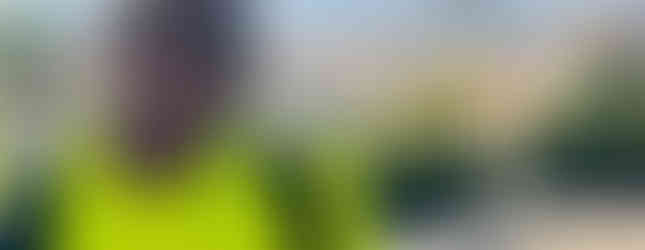


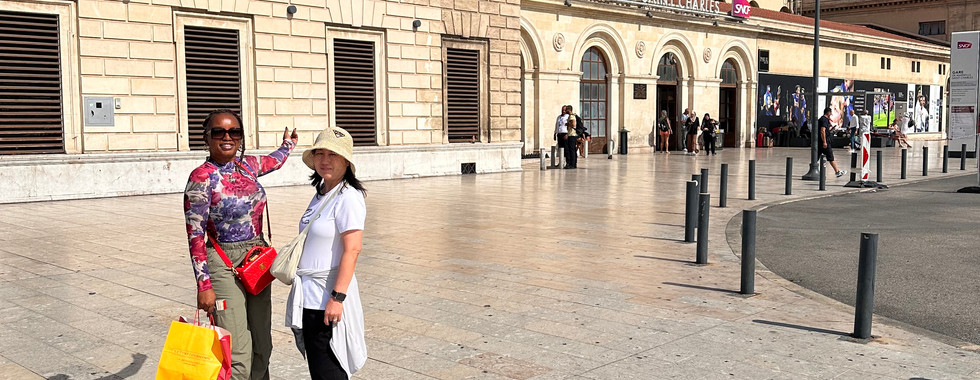
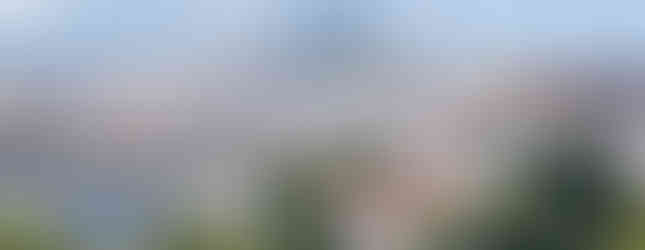










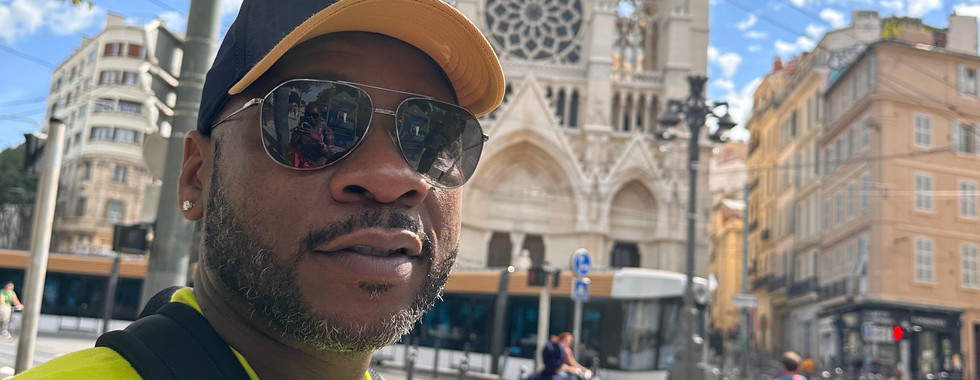

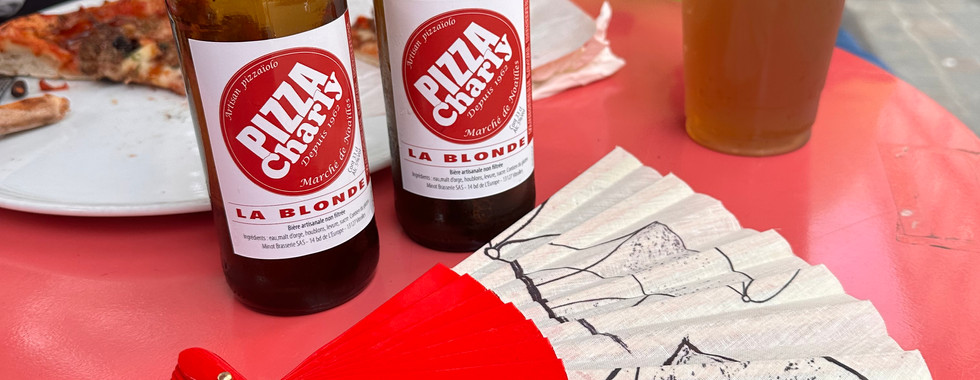













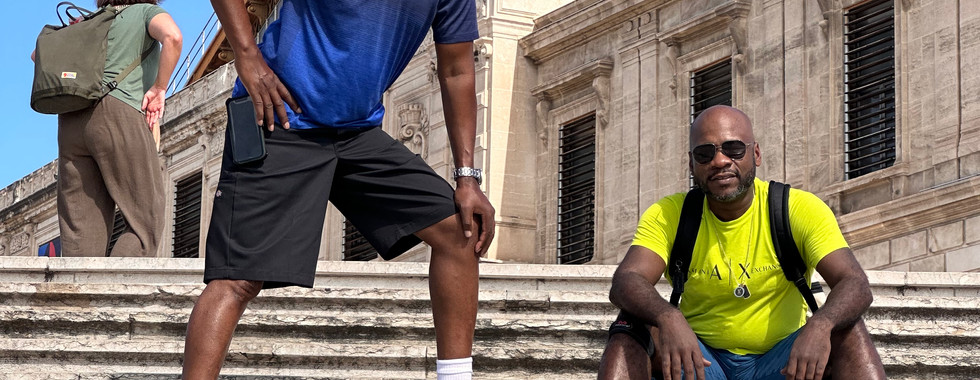



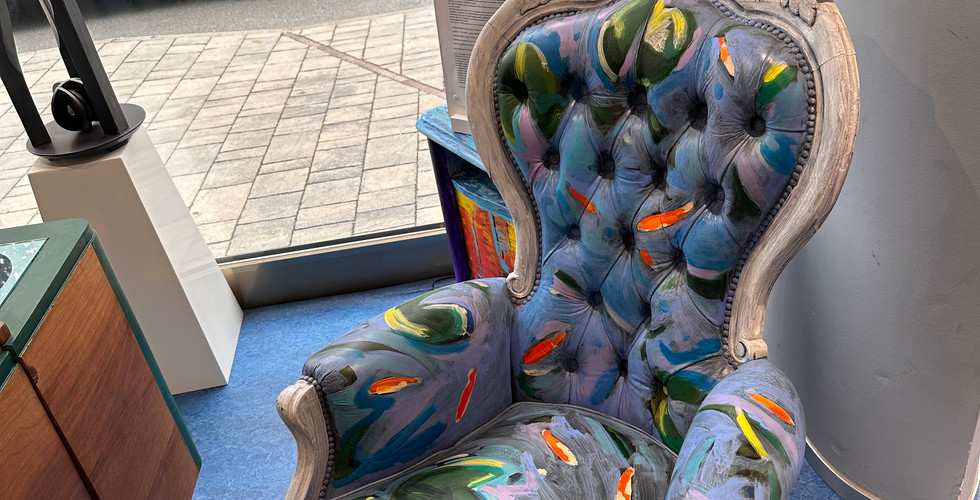





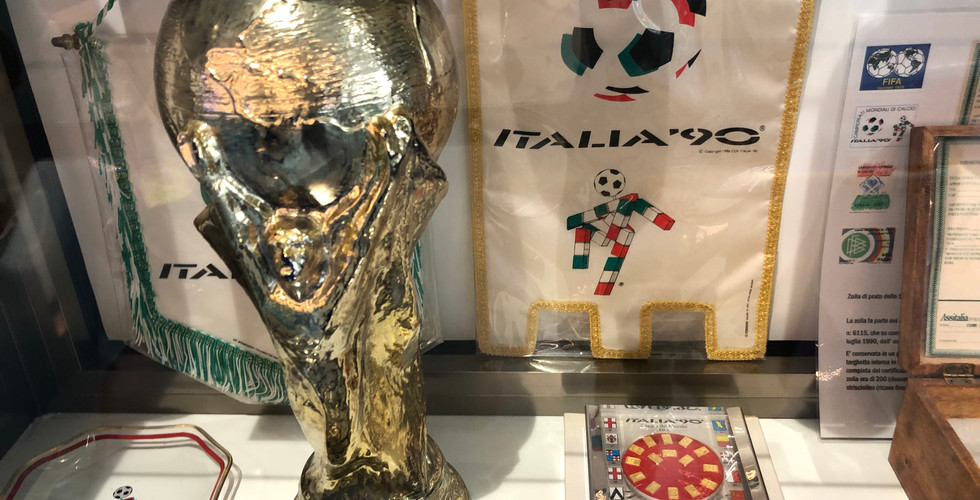




































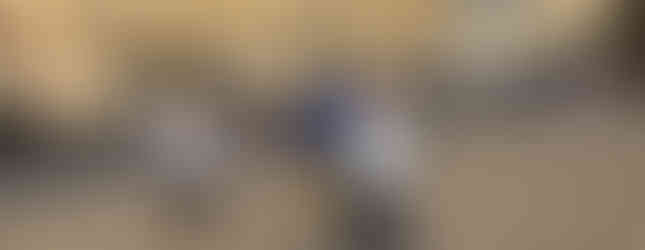


























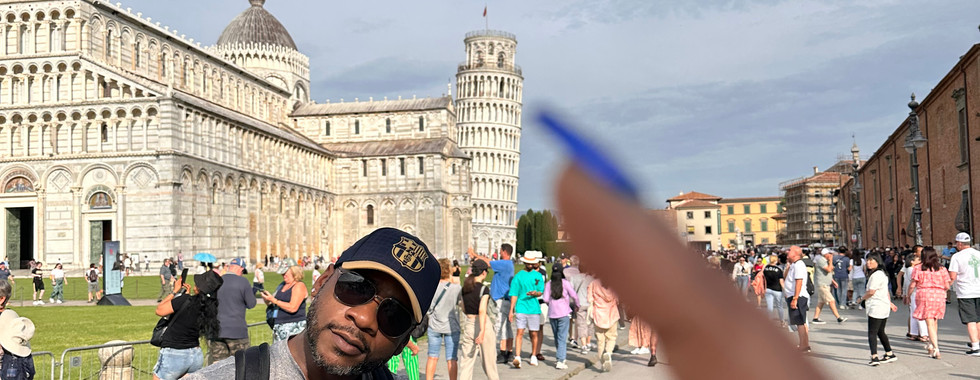



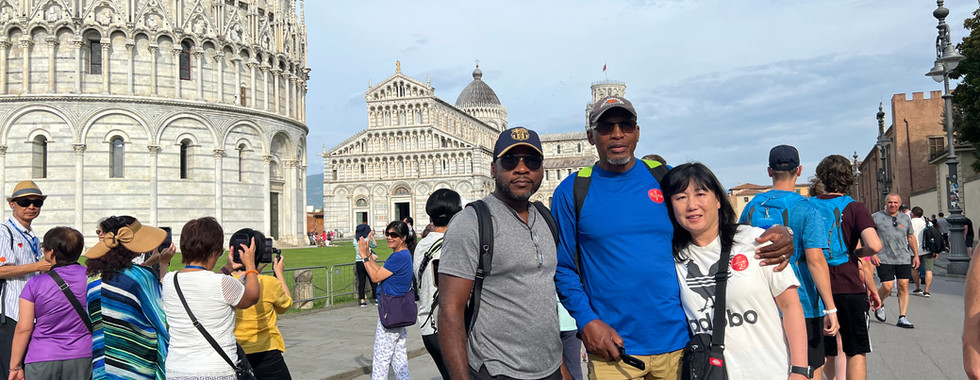




















This was a crazy day! It really started to hit me that this was not the typical cruise itinerary. I was getting language fatigue. First spanish, then french, then italian! Okay, I have to be ready for anything....... Let's Geaux!